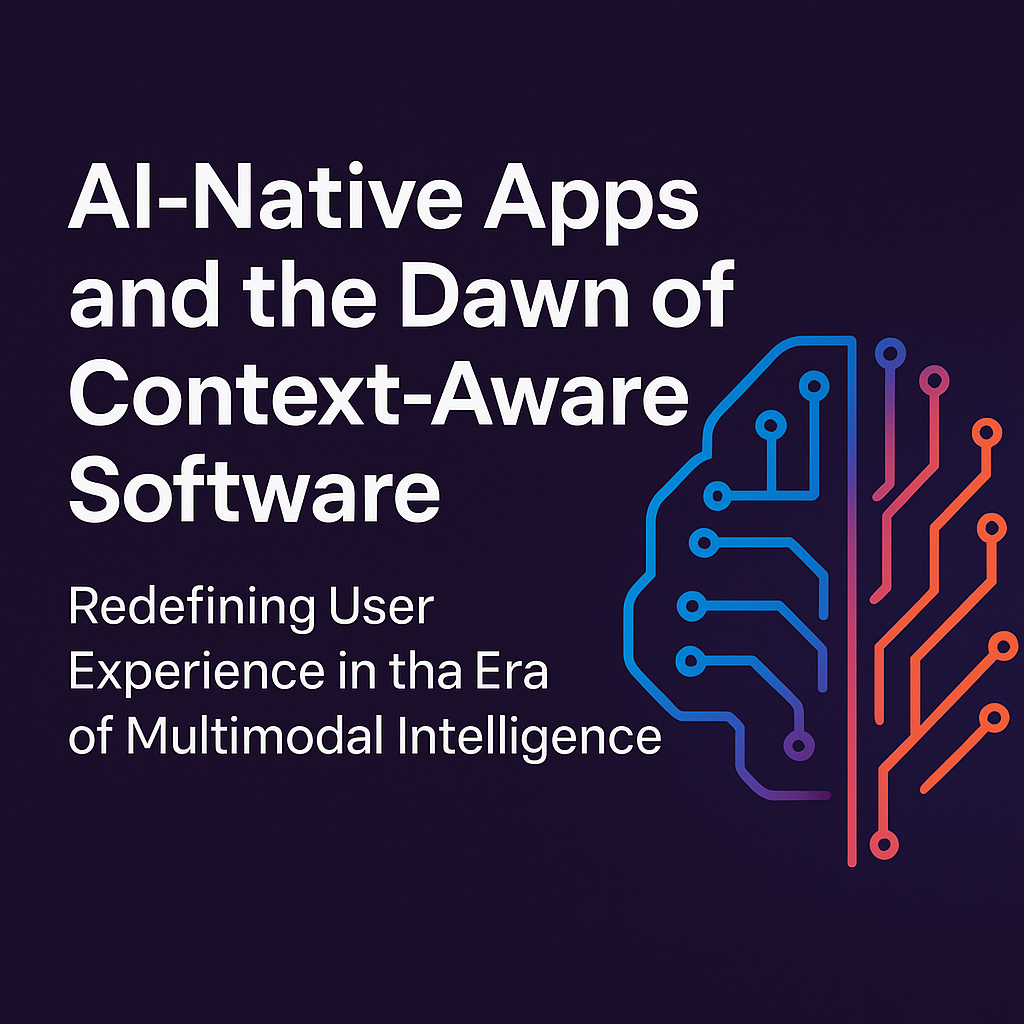Abstract
As artificial intelligence (AI) transitions from a peripheral feature to the nucleus of modern software, AI‑native applications are emerging. These applications are built around AI from the ground up and are designed to learn, adapt, and improve continuously through large language models (LLMs), multimodal input processing, and context-awareness. This paper explores the architecture, challenges, and user experience transformations enabled by AI-native apps in the age of multimodal intelligence.
1. Introduction
Traditional software follows deterministic workflows, but AI-native apps are architected to reason, infer, and evolve. Fueled by real-time data and powered by multimodal learning, these apps engage in context-aware decision-making and deliver dynamic user experiences.
2. Defining AI-Native Applications
AI-native applications are not just AI-enhanced — they rely on AI models as foundational components. According to Supaboard (2025), they are built to be predictive, autonomous, and self-learning from inception, integrating models like LLMs, vision models, and contextual memory.
3. The Rise of Context-Aware Software
Context-aware computing is defined as software that can adapt based on physical or digital context — such as location, user activity, historical behavior, or environmental factors. As stated by Anind Dey (2001), context is “any information that can be used to characterize the situation of an entity.” Applications like Google Now and adaptive AI agents (e.g., ReAct, LangChain) leverage this model to deliver personalized experiences.
4. Multimodal Intelligence as the Enabler
Multimodal AI systems can process and integrate information from text, audio, vision, and sensory input simultaneously. In 2025, generative models like GPT-4o and Gemini 2 represent a leap forward in combining modalities for inference, helping apps understand deeper user intent across interaction types.
5. UX Redefined by AI-Native Principles
- Dynamic Interfaces: AI-native apps modify their UI/UX in real-time based on interaction history or user context (e.g., Superhuman’s adaptive inbox).
- Memory-Driven Agents: Apps remember past behavior to personalize future experiences (e.g., LangChain agents with vector memory).
- Proactive Systems: Instead of reacting to user prompts, the system initiates suggestions (e.g., Notion AI, GitHub Copilot).
6. Case Studies
– Reframe AI (2025): Demonstrates situational reasoning in CRM software.
– Context AI: A new productivity suite that uses LLMs with episodic memory and context stacks to personalize user workflows.
– Superhuman: Leverages AI-native development to streamline user actions and decrease latency.
7. Challenges Ahead
- Privacy: Storing and leveraging user context and memory raises ethical and legal concerns.
- Data Quality: Garbage in, garbage out. Contextual AI is only as good as its data signals.
- Interface Complexity: Adapting the UX while retaining usability is a key design hurdle.
8. Conclusion
AI-native apps are the future of software. By integrating multimodal intelligence and context-awareness, they redefine human-computer interaction. However, ensuring privacy, interpretability, and ethical design will be essential as this paradigm evolves.
References
- Supaboard (2025). AI-Native Apps
- Dey, A. K. (2001). Understanding and Using Context. PDF
- Schilit, B. et al. (1994). Context-Aware Computing Applications. PDF
- Superhuman (2025). AI-native Development
- Baytech Consulting (2025). State of AI in 2025
- The New Stack (2025). Why Context-Aware AI is Replacing Code-Only Tools

